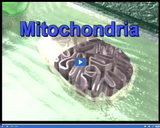
Organelles called mitochondria are largely responsible for carrying out respiration in cells.
- Subject:
- Science
- Provider:
- Utah Education Network
- Author:
- Visual Learning Company
- Date Added:
- 02/28/2010

Resources created or licensed by the Utah Education Network

Organelles called mitochondria are largely responsible for carrying out respiration in cells.

Organelles are the structures within cells that break down food, move water, and store nutrients.

Plant cells possess a cell membrane, which is located inside the cell wall. It allows certain materials to flow in and out of the cell.

Plant cells are surrounded by a relatively rigid cell wall, which is made of cellulose.

In the process of active transport, materials move from an area of lower concentration to an area of higher concentration. This requires more energy.
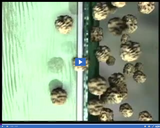
Diffusion involves the movement of molecules from an area of greater concentration to an area of lesser concentration.
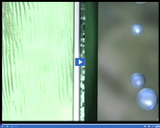
In the process of osmosis, cells gain water by allowing it to flow from an area of higher concentration, outside the cell, to an area of lower concentration, inside the cell.
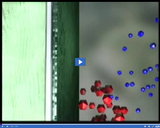
Cell membranes are selectively permeable, only allowing some molecules to pass through.

The nuclear membrane surrounds and protects the nucleus. Located inside the nucleus is the nucleolus, where RNA and ribosomes are created.

Vacuoles store food and other materials for later use by the cell. They also store waste, and in plant cells, they store water.
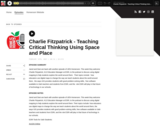
Jared and Dani are back with another episode of UEN Homeroom. This week they welcome Charlie Fitzpatrick, K12 Education Manager at ESRI, to the podcast to discuss using digital mapping to help students explore the world around them. Their topics include: how educators use digital maps to change the way we teach students about the world around them, the ways GIS provides students with good problem-solving skills, free software available to Utah teachers and students from ESRI, and the role ESRI will play in that future of technology in our schools.
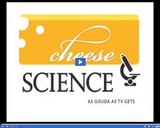
Thunder Jalili, University of Utah answers the question: What are the facts about health risks and cheese?

Grant and Russell Kohler, engineers and dairy farmers answer the question: What do technology, engineering, and math have to do with cheese?
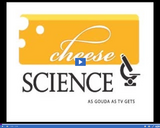
Michelle Culumber, Weber State University answers the question: What is the difference between white and blue molds in cheese?
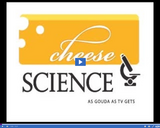
John Armstrong, Weber State University answers the question: What role does physics play in cheese making?
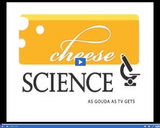
Jess Perrie, graduate student in cheese chemistry, Utah State University answers the question: Why are there so many different cheddar cheeses?

Craig Oberg, Weber State University answers the question: Why do raw milk cheeses produce a wider variety of flavor?

Wills cheese tour takes him across the United States to look at artisanal cheese in regions not normally associated with specialist cheese. Will learns first hand about the challenges of making farmstead washed-rind cheese in Virginia before meeting up with his old friend Ari at Zingermans Creamery in Ann Arbor, Michigan. Then its a drive to Indiana to meet American goats cheese pioneer Judy Schad of Capriole dairy where he is encouraged to find a new way to enjoy Bourbon. After a brief stop at Saxelby Cheesemongers, a stall at New York Citys public market on the Lower East Side, Will travels to Oregon to discover the fascinating story behind Rogue River Blue, one of the oldest raw milk blue cheeses in the US.

If the name Brie conjures up images of a mild creamy flat cheese covered with a pure white mould, chances are you have never experienced authentic Brie from Brie. Will visits the Ile de France region to learn more about the benchmarks of the style, Brie de Meaux and Brie de Melun, before visiting Bries close cousin, Chaource, in the Champagne region. He then travels to the underground caves of Herves Mons to find out how this respected Affineur selects and matures cheeses to its optimum before calling on Pascal Beillevaire to get a few tips from the largest specialist cheese retailer in France.

The Danish dairy industry is widely recognized as one of the most efficient in Europe; it produces more blue cheese than any country in the world. Will travels to the pretty island of Bornholm to see how Danablu is made, before heading to Copenhagen to find out more about how the Nordic food revolution is now encouraging large producers to look at more interesting cheese varieties. After visiting several small dairies Will discovers that nothing has changed when it comes to the Danes' love of smoked cheese.